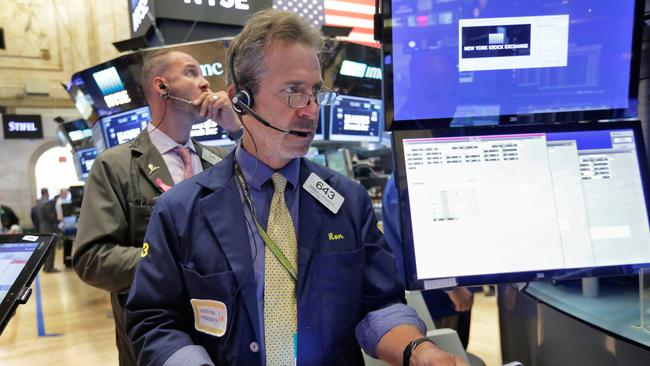Wall St gets a boost from rising oil prices
The ASX is set to defy US leads after energy stocks rose and weak services data looked likely to delay a rate hike.

Energy companies led gains in US stocks overnight as the US oil price rose.
Expectations that underwhelming economic data would push the Federal Reserve to delay raising interest rates also drove action in the markets after data showed slowing growth in the US service sector.
European shares finished mixed, as investors worried about the disappointing US data.
But the Australian share market is set to fall this morning, with ASX futures down 9 points at 6.30am (AEST).
The Dow Jones Industrial Average added 46 points, or 0.3 per cent, to 18538. The S&P 500 gained 0.3 per cent, and the Nasdaq Composite rose 0.5 per cent.
Signs of economic weakness don’t bode well for US companies, but traders said the latest indicators are being considered more for their potential impact on interest rates.
“There’s a worry that the market has disconnected from fundamentals,” said Ray Moore, a trader at Raymond James. As the European Central Bank prepares to meet Thursday, “everyone is very central bank focused this week,” Mr Moore said.
Gains in telecom and utilities shares helped offset declines in financials.
The telecom and utilities sectors -- popular because of their relatively high dividends while rates have remained low this year -- were among the biggest gainers in the S&P 500 Tuesday. Utilities rose 1.1 per cent and telecom shares added 0.9 per cent. Verizon Communications rose 1.2 per cent.
The S&P 500’s financial sector shed 0.2 per cent.
“The wind is coming out of the sails for financials based on the consensus that the rate hike is going to be delayed,” said Justin Wiggs, an equity trader at Stifel.
Profits at banks and financial firms are squeezed when rates are low.
A gauge of service-sector activity fell last month, according to data released Tuesday, following Friday’s employment report that US job growth cooled in August. The Institute for Supply Management said its nonmanufacturing index fell to 51.4 in August from 55.5 in July.
Fed funds futures, which are used to place bets on central-bank policy, show investors and traders believe there is an 18 per cent chance the Fed will raise rates this month, down from more than 20 per cent earlier Tuesday, according to data from CME Group. The odds of an increase by December fell below 50 per cent.
The yield on the 10-year Treasury note fell to 1.544 per cent from 1.597 per cent on Friday. The WSJ Dollar Index, which measures the US currency against 16 others, declined 1.1 per cent.
After a few quiet weeks, investors were beginning to look ahead to the European Central Bank meeting on Thursday.
The ECB signaled at its July meeting that it would reassess the economic situation in September, when it would also release a fresh round of forecasts. The latest business surveys from the eurozone services sector showed growth, but at its slowest pace in 19 months.
The central bank’s bond-buying program, which was instituted last year, is officially scheduled to run until March 2017. Many analysts expect the purchases to continue for considerably longer.
“We think the most likely outcome on Thursday is that they do nothing in terms of interest-rate changes,” said Jörg Krämer, chief economist at Commerzbank AG. But even if ECB chief Mario Draghi doesn’t announce a continuation of quantitative easing at the meeting, “the market will be expecting it to come later in the year,” he said.
The program passed a milestone in the week to Sept. 2, with figures released on Monday showing that the central bank has purchased 1 trillion euros ($US1.12 trillion) in sovereign debt.
The Stoxx Europe 600 fell 0.3 per cent Tuesday, while the U.K’s FTSE 100 declined 0.8 per cent. In currency markets, sterling rose 1 per cent against the dollar to $US1.3431.
Stocks mostly rose in Asia. Japan’s Nikkei Stock Average gained 0.3 per cent and Hong Kong’s Hang Seng rose 0.6 per cent. Australia’s ASX fell 0.3 per cent.
Dow Jones





